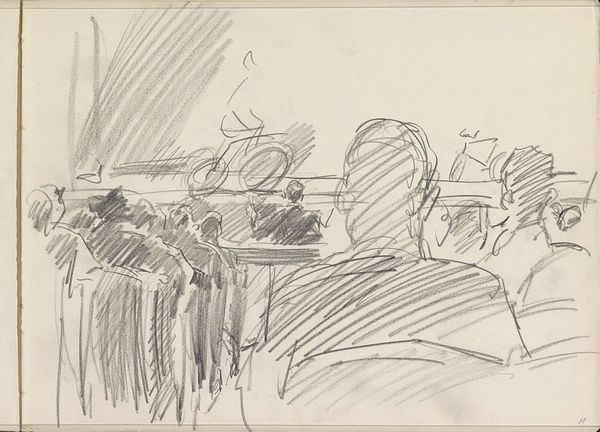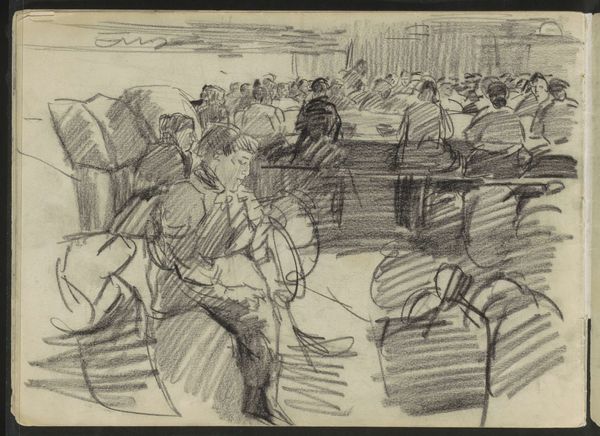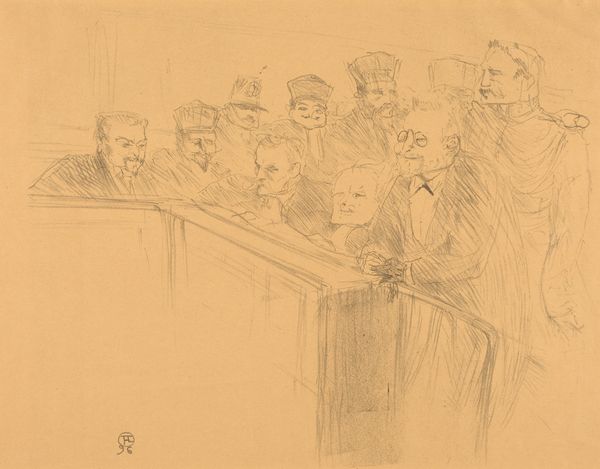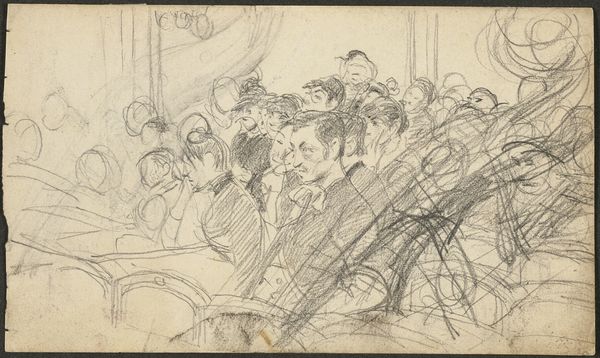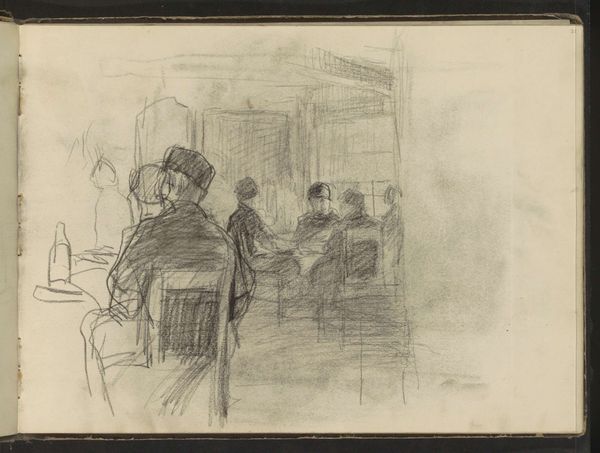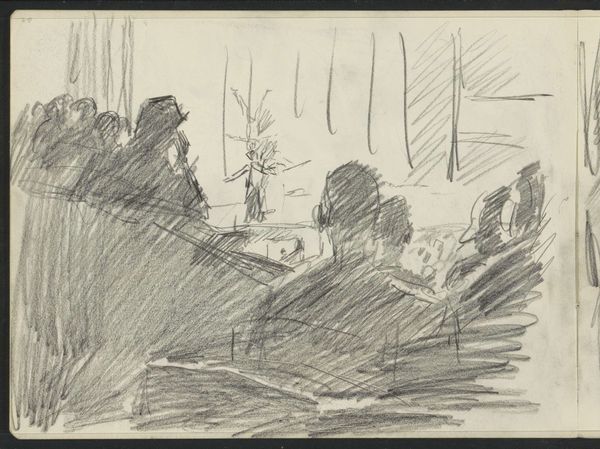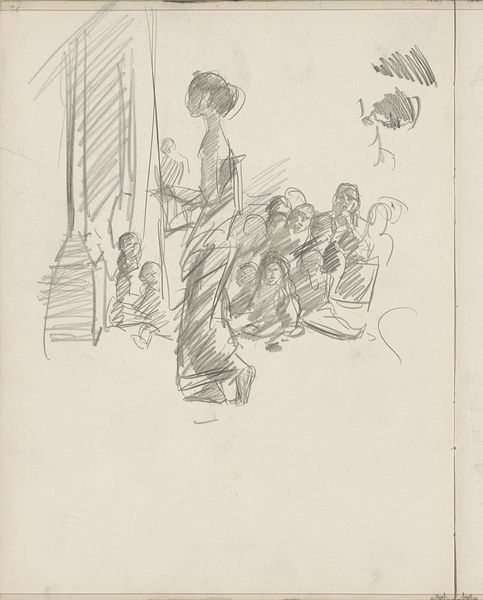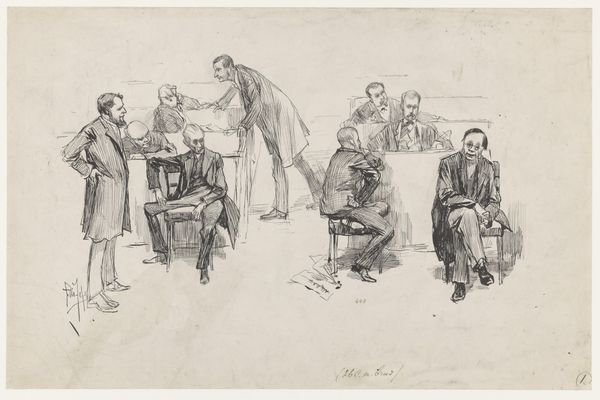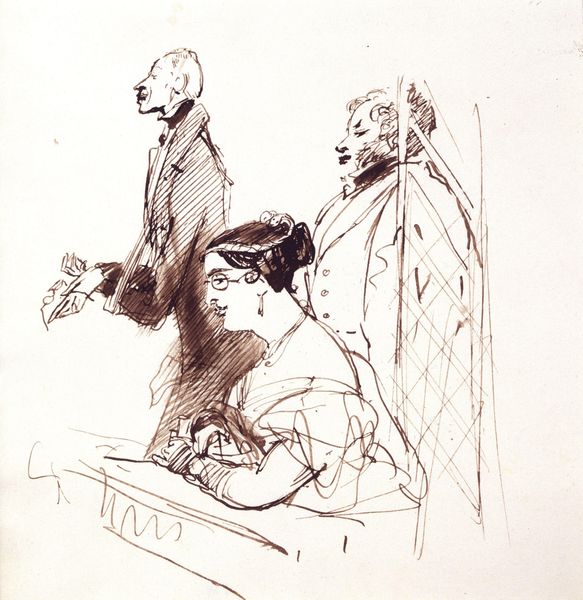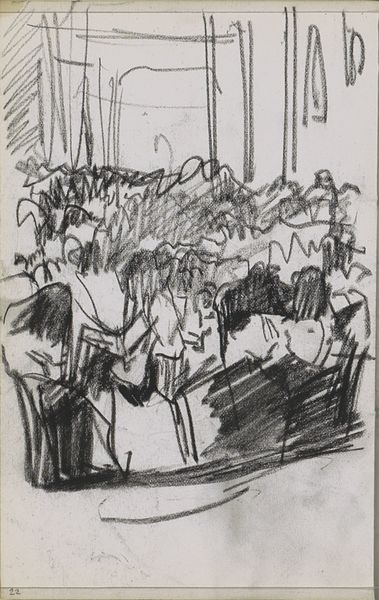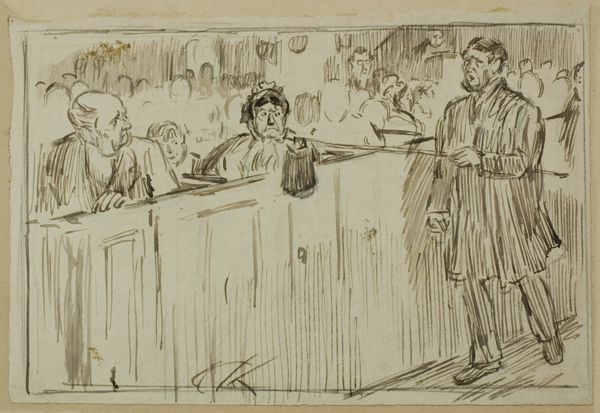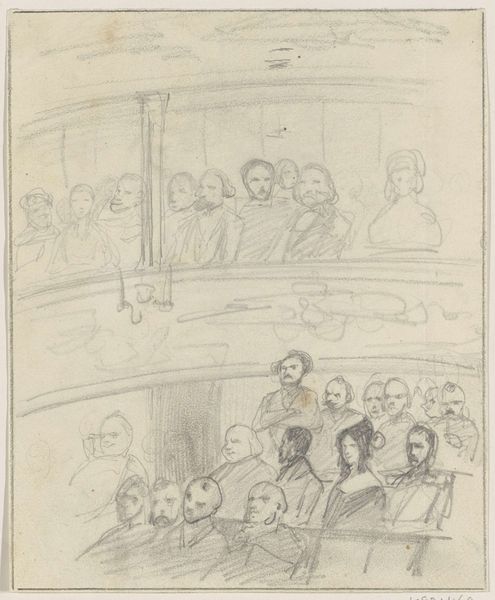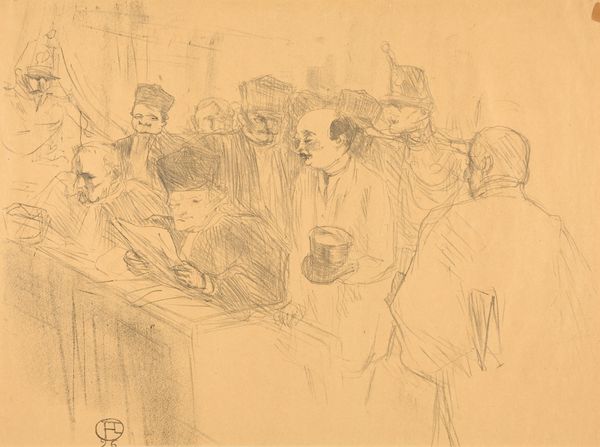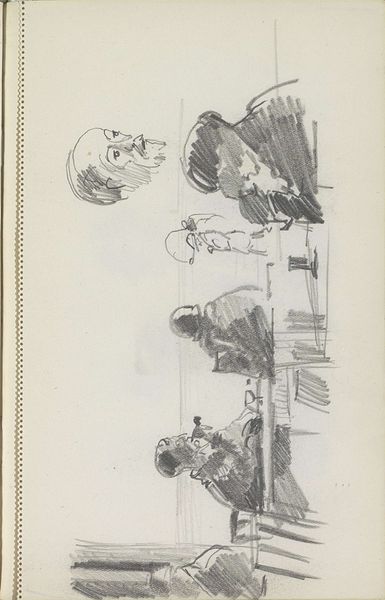
Copyright: Rijks Museum: Open Domain
Curator: This pencil drawing, currently held at the Rijksmuseum, is titled "Theatervoorstelling," or "Theatrical Performance," by Isaac Israels and was created sometime between 1875 and 1934. Editor: My initial impression is of an unposed scene. The scratchy, almost frantic linework gives it a spontaneous, candid feel. Like we are peering into a private moment. Curator: Precisely. Look at the use of line weight. The rapid, suggestive marks create a sense of depth and volume, even though it is just a sketch. Notice the figures; they are not idealized but rendered with a raw, almost journalistic quality. Editor: Which situates this artwork firmly within the historical context of late 19th and early 20th century interests, particularly the growing trend to picture modern life outside the traditional aristocratic portraits and landscapes, which has a very strong correlation to the art market democratization at that time. What's your view of its placement within impressionism? Curator: This absolutely reflects Israels' affiliation with Impressionism; not so much for the light and color, given the monochrome medium, but the emphasis on capturing a fleeting moment, an impression, using quick and economic marks to capture movement and form. Semiotically, the repeated forms hint at an underlying organizational structure and aesthetic program. Editor: How do you think a piece like this impacts the wider consumption of art in Dutch society during this era? Is this a depiction of accessible theater that's meant for the masses, for example? Curator: Perhaps, or this sketch functions more as a study, informing us that these kinds of leisure scenes became socially valuable and popular artistic subjects, demonstrating that artists were very attuned to societal tastes. We can appreciate Israels' drawing beyond his aesthetic sensitivity and place the sketch inside broader debates around the commodification of culture. Editor: This perspective grants us new and critical readings. Seeing its creation and potential reception conditions enriches the analysis greatly. Curator: I appreciate how you illuminated those specific sociohistorical parameters! It's a compelling addition.
Comments
No comments
Be the first to comment and join the conversation on the ultimate creative platform.
